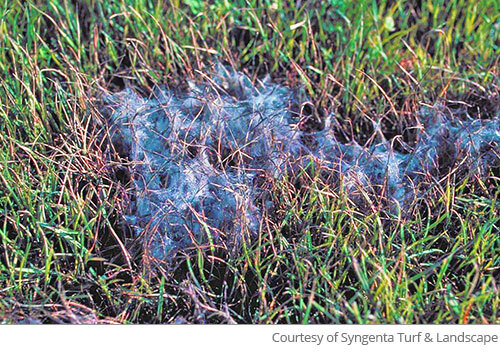Pythium Blight Is a Fungal Lawn Disease

Pythium blight, sometimes called grease spot or cottony blight, is a fungal lawn disease that can infect all types of turfgrasses, but does the most damage to cool-season turfs. This blight of spots on a lawn can be easily spread by people, equipment, or animals, or over short distances through water.
Affected areas on your lawn may not be obviously infected at first. Grassy areas infested by Pythium blight may only look to be darker shaded damp patches of turf. These damp patches often develop a greasy appearance as the infected blades of grass begin to lie flat and stick together.
Pythium Blight Appearance

- Irregular patches or streaks on the lawn
- Small areas of unhealthy turf may combine to cover a larger area
- Dark, water-soaked lesions will appear on individual grass plants
- Grass leaves will turn yellow, then turn light brown as they progress to death
- Irregularly shaped dark greasy or slimy patches of matted grass may form, sometimes from 6 to 12 inches across
- A whitish cottony growth may appear on the surface of grass suffering from blight when dew is present in the morning hours. These patches may resemble pink snow mold, but are a different disease that should be identified correctly for proper treatment. Treating for the wrong fungal disease can result in unwanted turf injury.
If you believe your lawn has Pythium blight, learn more about where to find it on your property in our Pythium Blight Inspection Guide. Select the right arrow button below to read more.



